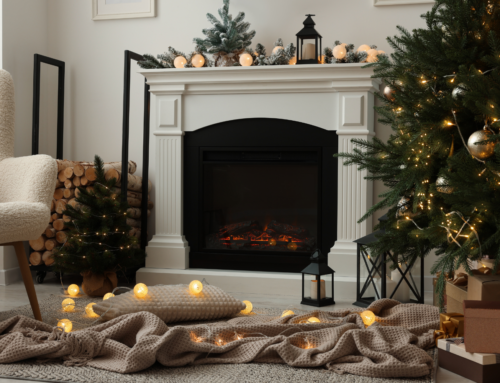The annual Autumn House Tour presented by the Lambertville Historic Society will take place Sunday, October 15, 2017. Ten historic homes in town will be open for a self-guided walking tour. Tickets are $25 in advance and $30 on tour day and may be purchased online or from one of various local merchants listed on the website.
On the day of the tour, once you have purchased your ticket, stop by one of the three ticket sales sites to pick up your tour booklet to begin the house tour. Generally plan on your tour lasting approximately 2 hours. Sites can be visited in any order.
The Autumn House tour coincides with this year’s greater Art & Antiques Weekend, which features special events and offers from over fifty local shops, galleries, and organizations.
Here are the homes you can visit throughout this year’s tour:
1797 Side hall stone house
One of the oldest homes in Lambertville, this is one of the few three-bay side hall stone houses remaining. The nearby creek provided water for the original owners’ tanning business.
Vernacular twin circa 1870
On property originally owned by a descendent of the original settlers of Lambertville is a fine example of a vernacular three-bay, side hall half duplex home. The current owners are the ninth family to occupy it.
 Vernacular with Italianate influences circa 1873
Vernacular with Italianate influences circa 1873
It is believed this house, along with another, was bequeathed to the Episcopal Church with the proviso that one or the other be used as a parsonage. The home experienced numerous changes and additions during the 20thcentury but despite them remains an elegant example of 19th century vernacular architecture.
 Vernacular Style Row house circa 1850
Vernacular Style Row house circa 1850
This basic structure is that of a workman’s home, a term suggesting a simpler style and more modest size. Its style is termed vernacular, as it was not designed by an architect, but relied on the design skills and traditions of local builders, and was based on local materials. These modest houses show a mix of Federal and Victorian styles that was common in Lambertville.
In 1909, a wealthy businessman and owner of a coal and lumber company, built one of Lambertville’s most imposing mansions as an anniversary present to his wife for the then astronomical cost of $65,000. The same family owned it until 1980 when a nearby church took it over for a community center. It later became Lambertville’s first bed and breakfast and is now again a private residence.
Queen Anne style circa 1890
One hundred plus years ago local builder and lumber dealer built and resided in this historic Queen Anne-style building. Today this handsome building, which was originally a duplex, houses six condominiums.
This stately hip-roof Georgian Colonial home is an outstanding example of new construction intentionally built for compatibility with a historic 19th century city. The foot-thick stone walls of the front facade are attractively authentic as well as a competent buffer for traffic noise.
The Lambertville Free Public Library 1812-1830
What since 1993 has been the Lambertville Free Public Library started its history as a mansion built from 1812 to 1830 for one of the early settlers of the city. It included a broad expanse of lawn with barns, gardens, and carriages It later was the Moose Lodge with apartments and the senior citizen center.
Centenary United Methodist Church 1865
The Centenary United Methodist Church building was constructed in 1865 with significant renovations in 1896,including the arched entryway. It was further renovated in 1956. The church was designed by Mr. Finch, a noted Trenton architect, and built by Cornelius Arnett, a builder of numerous houses in town. By the summer of 1866 the bishop preached the first sermon.
James Wilson Marshall House Museum and Exhibits 1816
The Marshall House Museum is the boyhood home of James Wilson Marshall, discoverer of gold in California in 1848, which led to the Gold Rush of California. It also serves as the headquarters of the Lambertville Historical Society. It features several informative historical exhibits.
We Are Supported By:
















